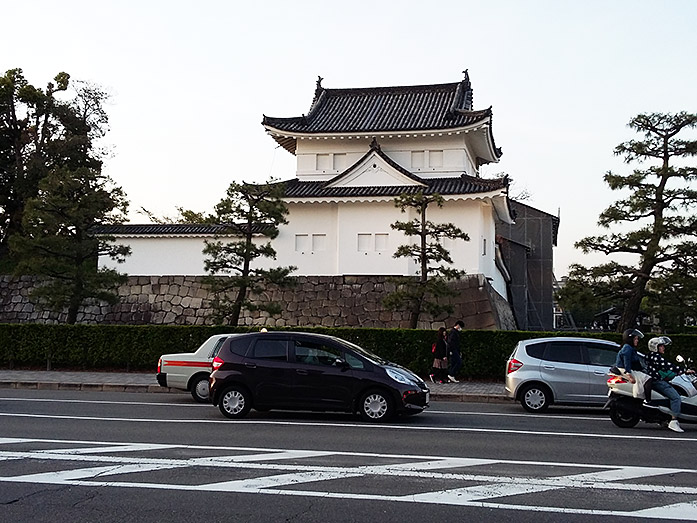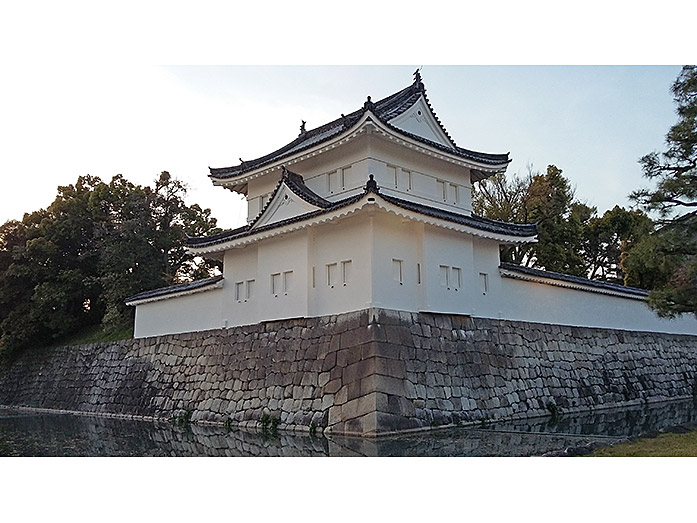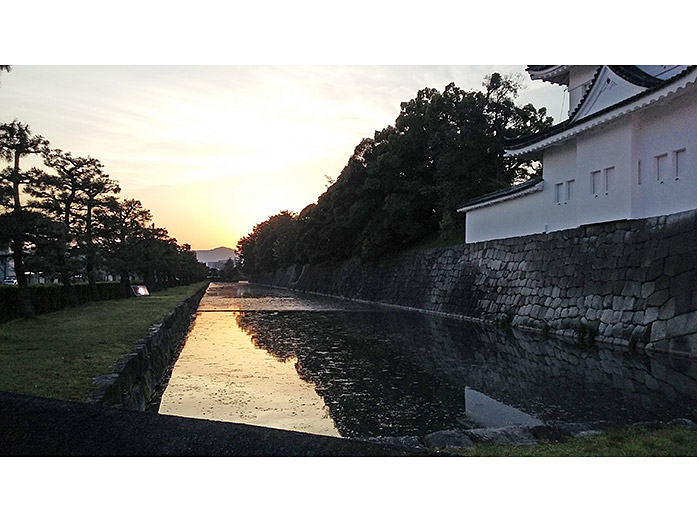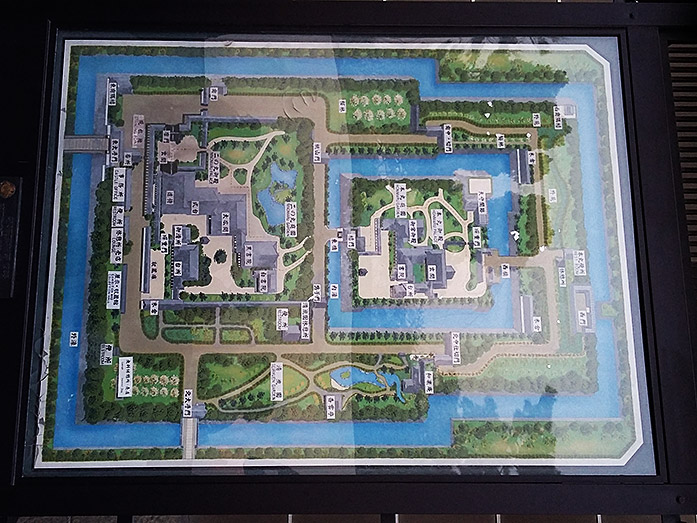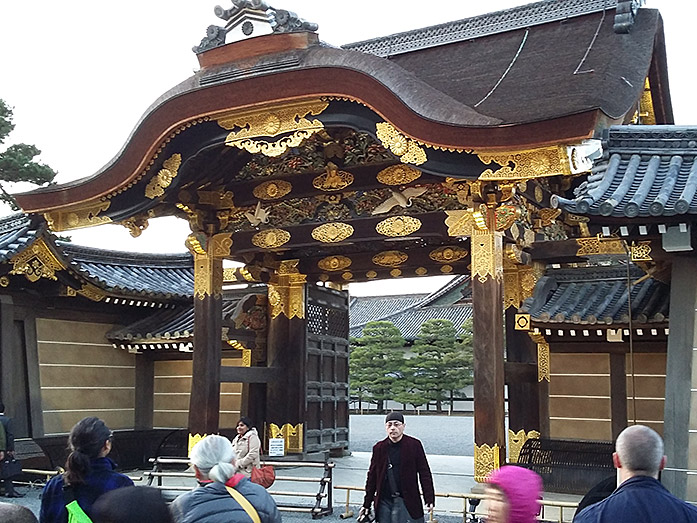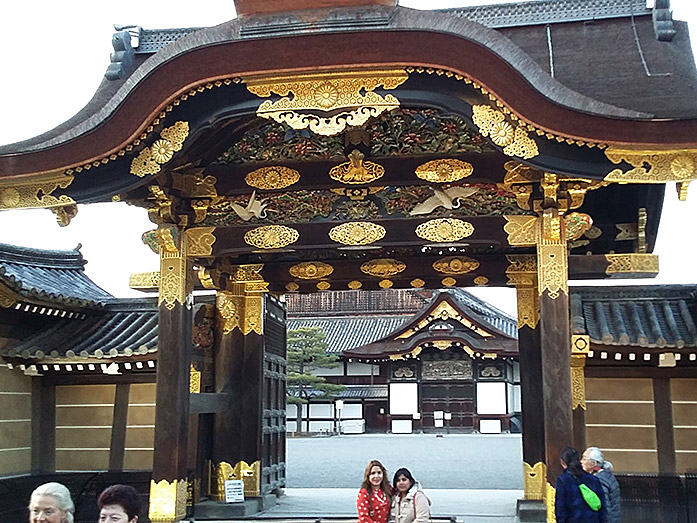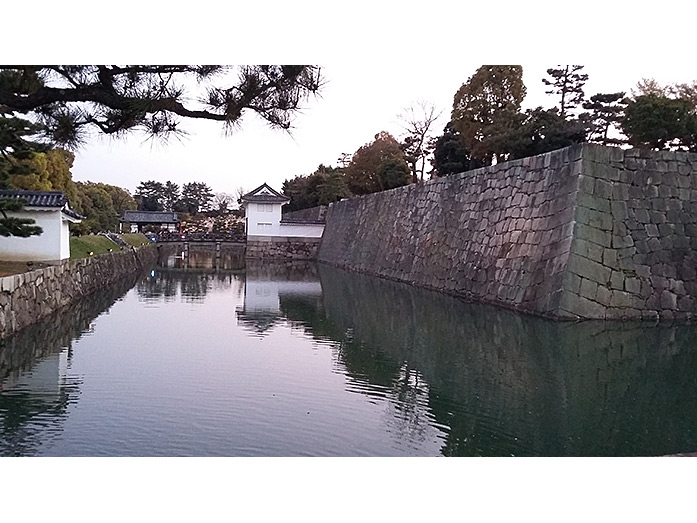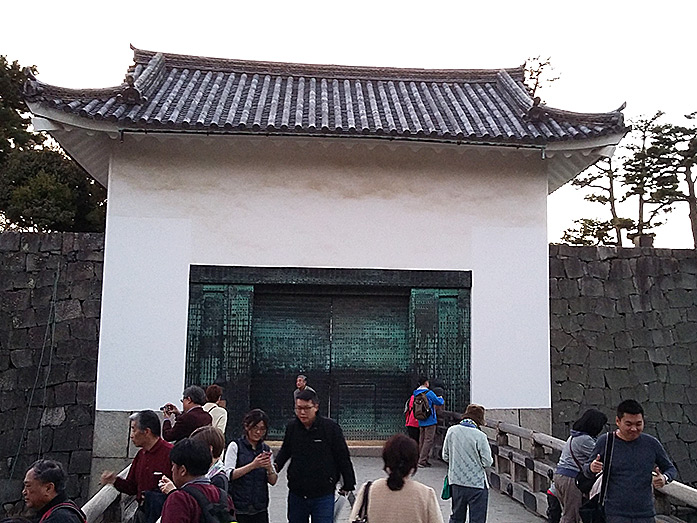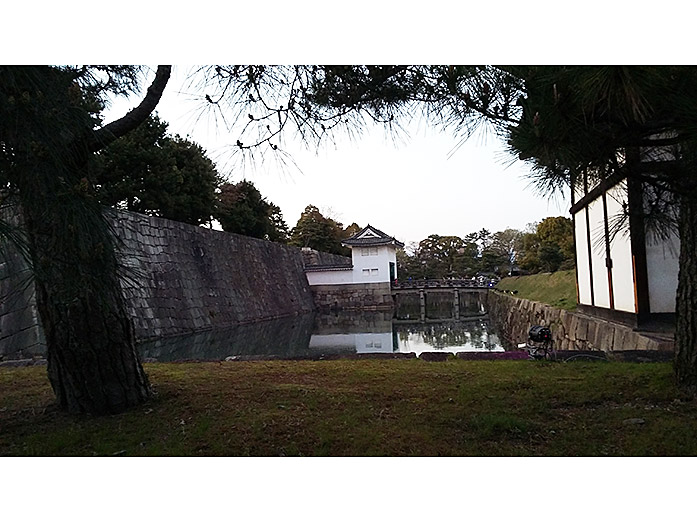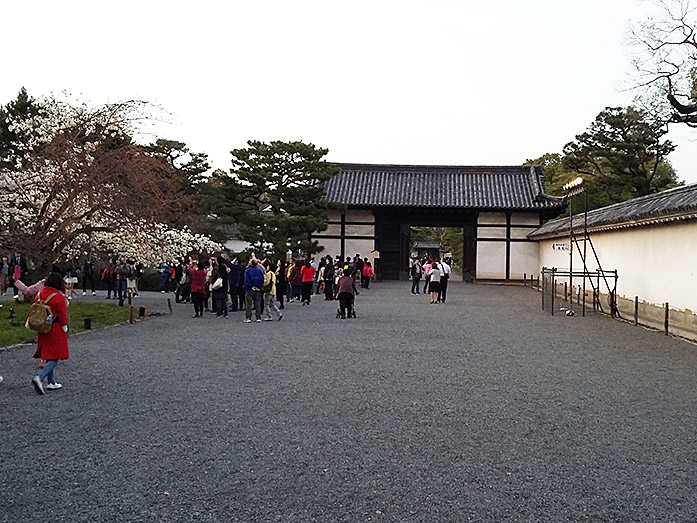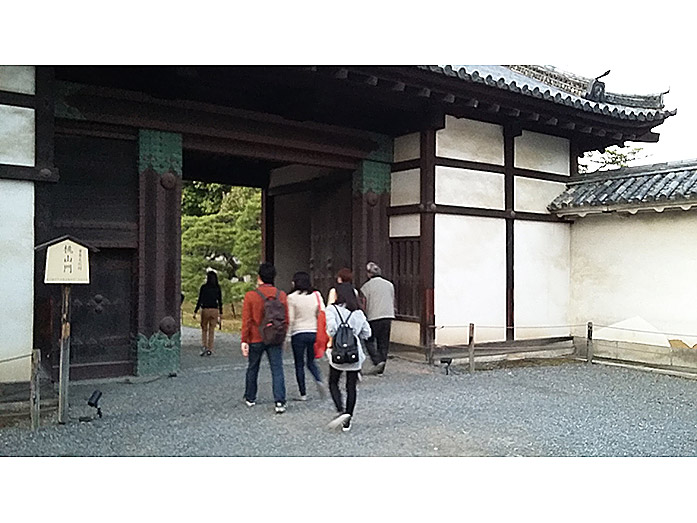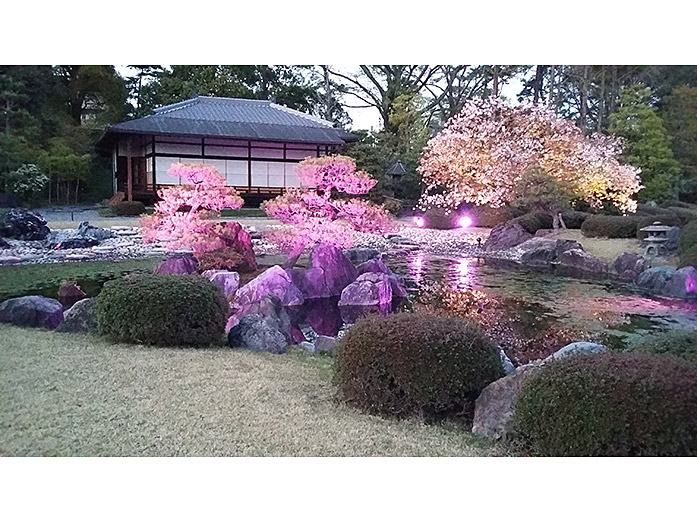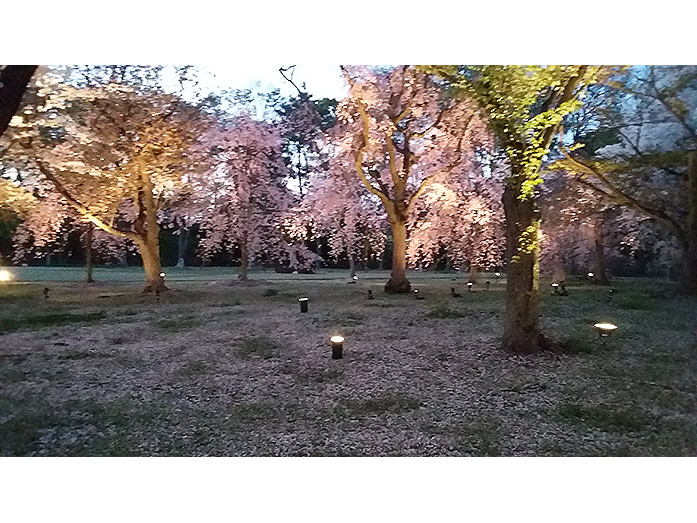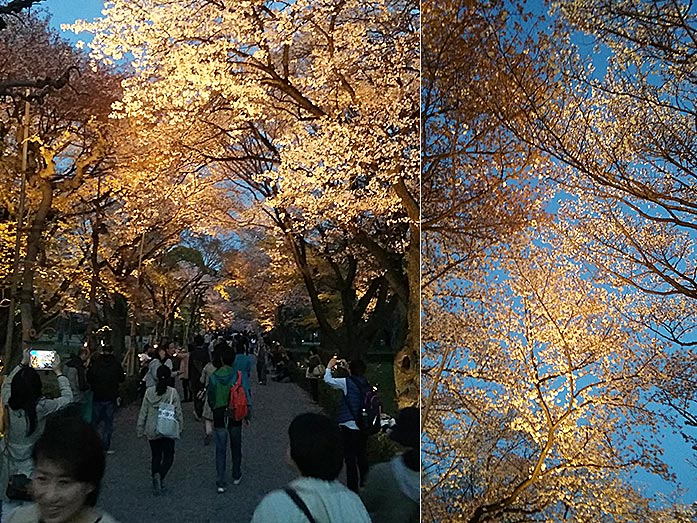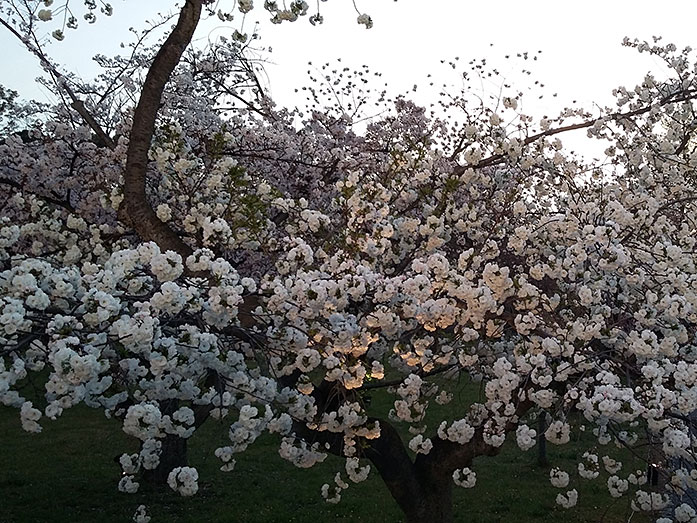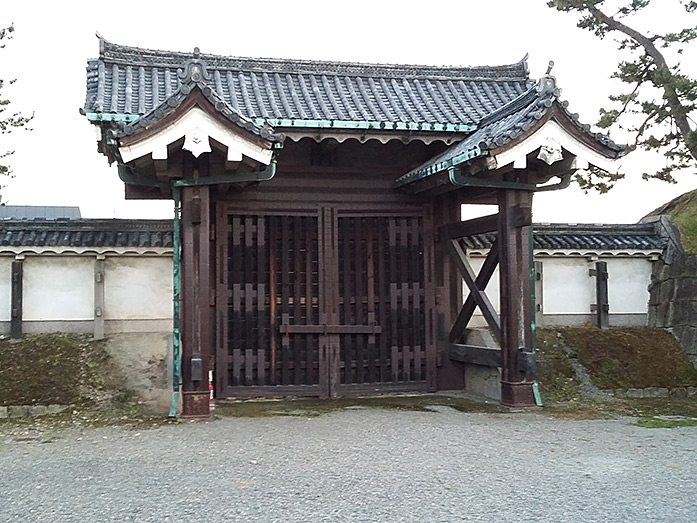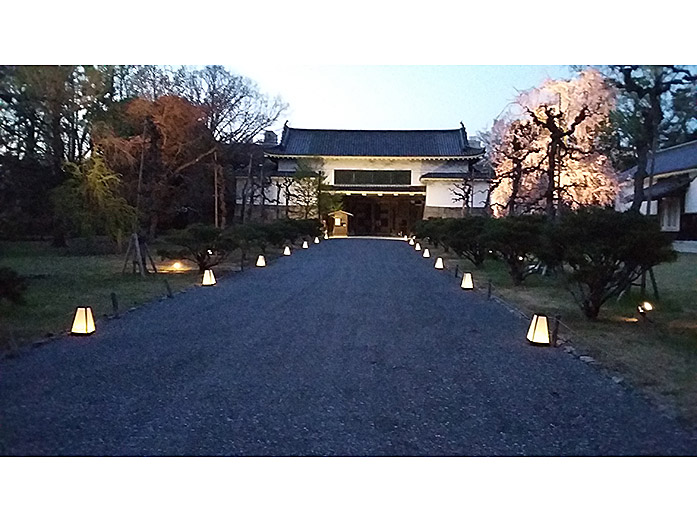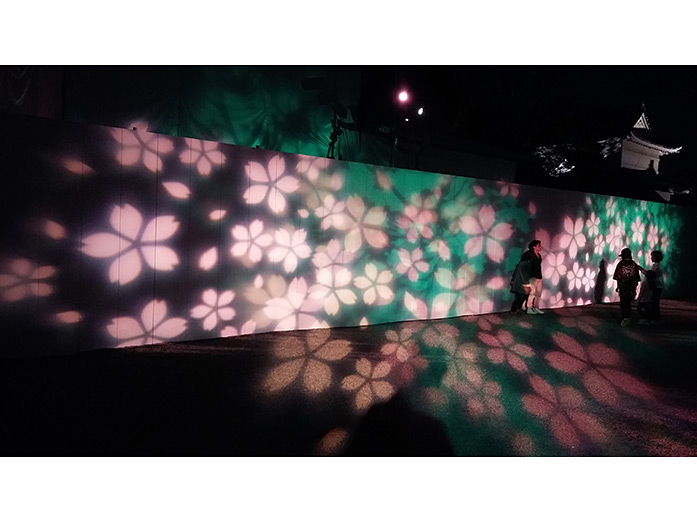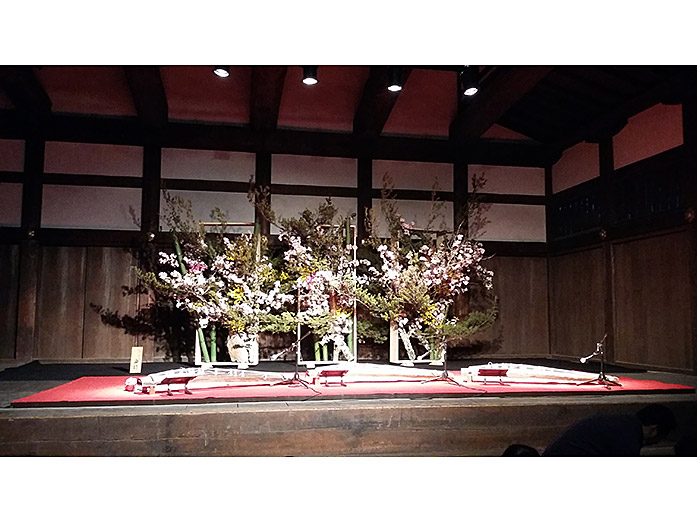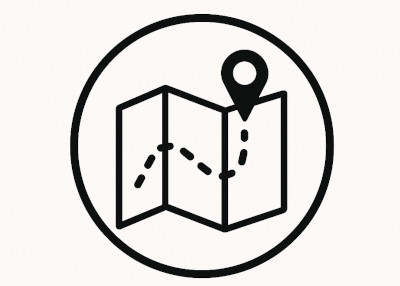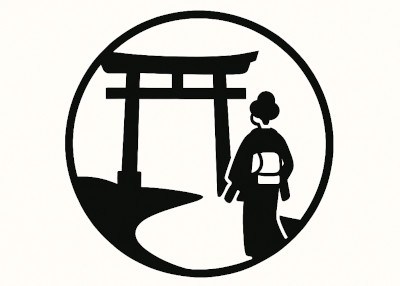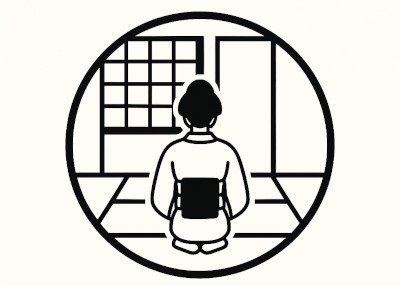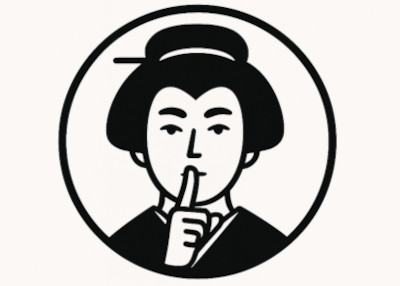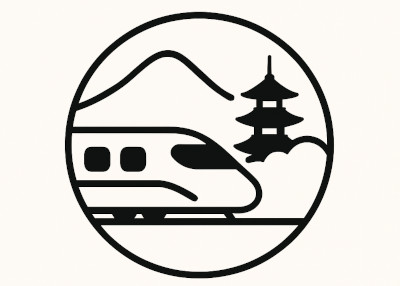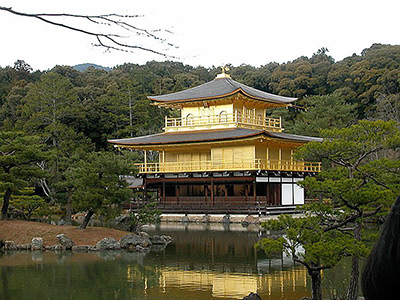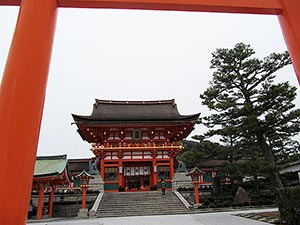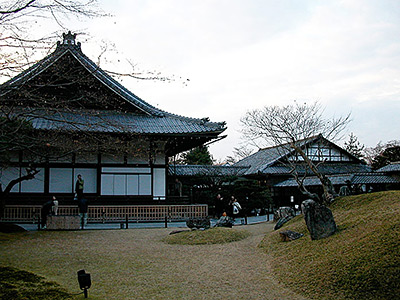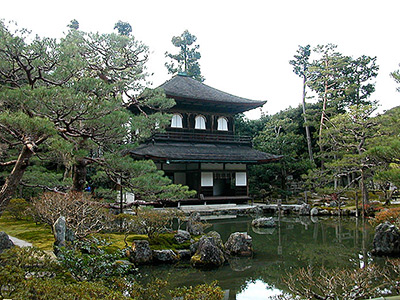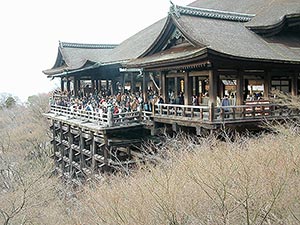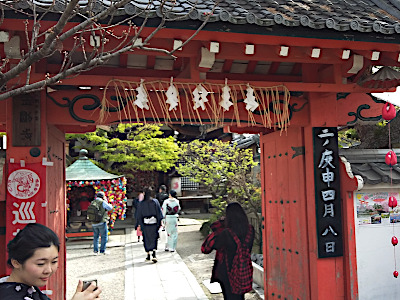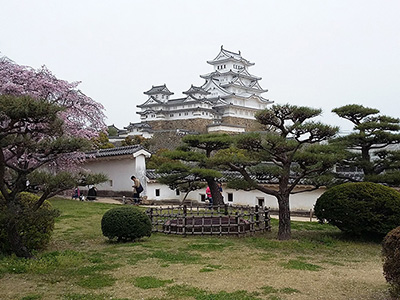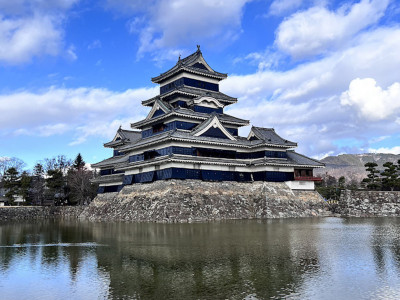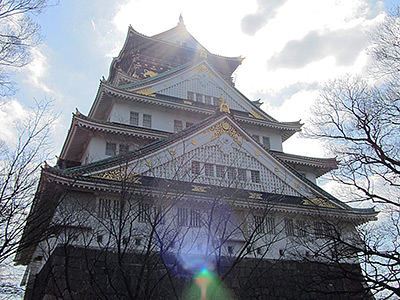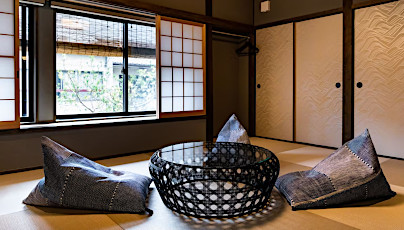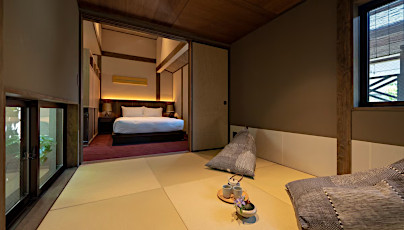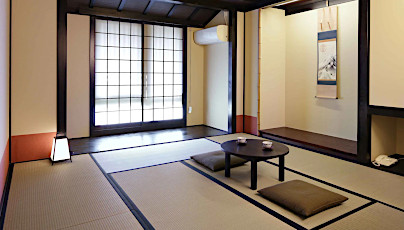Nijo Castle (Nijo-jo) in Kyoto
This post can contain affiliate links, which means that we may receive a small commission if you make a purchase using these links.
Facts & Figures
Nijo Castle, a UNESCO World Heritage Site in Kyoto, was the former residence of Tokugawa Ieyasu (1543 - 1616), founder and first shogun of the Tokugawa shogunate. It is the oldest existing palace building in the country. The massive stone walls, the wide moat, and the huge gates of the castle are an impressive sight and a testimonial of the power of the Tokugawa clan, which ruled Japan for over 260 years.
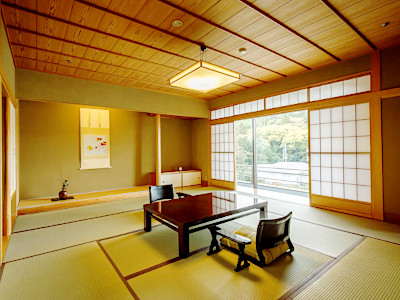 Best Places to Stay in Kyoto >
The flatland castle complex includes the Ninomaru Palace and gardens, two concentric rings (Kuruwa) of fortifications, Honmaru Palace, and some support buildings. After finishing the visit of the Ninomaru Palace, take a relaxing stroll through the surrounding Seiryu-en Garden. The castle grounds cover an area of appr. 275000 square meters and is a great example of the architectural style during the Momoyama period (1573 - 1603). The whole area features hundreds of cherry and plum trees of different varieties. Interesting to know that the castle was never attacked in its entire history. Nijo Castle is without a doubt one of the most popular sightseeing spots in Kyoto. It can get really crowded here, but it is worth the waiting time. My tip: Come here during the cherry blossom season from late March through late April and enjoy the wonderful scenery, especially during the illuminations at night. And another highlight is the colorful ginkgo trees in late fall.
Best Places to Stay in Kyoto >
The flatland castle complex includes the Ninomaru Palace and gardens, two concentric rings (Kuruwa) of fortifications, Honmaru Palace, and some support buildings. After finishing the visit of the Ninomaru Palace, take a relaxing stroll through the surrounding Seiryu-en Garden. The castle grounds cover an area of appr. 275000 square meters and is a great example of the architectural style during the Momoyama period (1573 - 1603). The whole area features hundreds of cherry and plum trees of different varieties. Interesting to know that the castle was never attacked in its entire history. Nijo Castle is without a doubt one of the most popular sightseeing spots in Kyoto. It can get really crowded here, but it is worth the waiting time. My tip: Come here during the cherry blossom season from late March through late April and enjoy the wonderful scenery, especially during the illuminations at night. And another highlight is the colorful ginkgo trees in late fall.
- Nijo Castle:
- Opening Hours - 8:45 am to 5:00 pm (last entry at 4:00 pm)
- Closed - 26th Dec - 4th Jan, on Tuesdays in Jan, Jul, Aug and Dec
- Admission Fee - 600 yen (Adults), 350 yen (Junior High and High School Students), 200 yen (Elementary School Students)
History
Nijo Castle in Kyoto was constructed by shogun Tokugawa Ieyasu (1543 - 1616) in 1603. It took the effort of his grandson Tokugawa Iemitsu (1604 - 1651) to finish the castle complex 23 years later. In 1626, significant renovations were carried out to prepare for the visit of Emperor Go-Mizunoo (1596-1680). In 1750 a five-storey castle tower within the Honmaru area was struck by lightning and completely destroyed and never rebuilt. The end of the Tokugawa shogunate came in 1867 when the last Shogun, Tokugawa Yoshinobu (1837 - 1913) announced his resignation. Afterward, the power went back to the Imperial Court. Nijo Castle was used in the following years as the seat of the Imperial Palace. After the palace was donated to the city Kyoto in 1939 the public got access to it in 1940. Nijo Castle received the status of a UNESCO World Heritage Site in 1994.
Location

Nijo Castle is located near Nijojo-mae Station in central Kyoto.
Address: 541 Nijo-jo-cho, Horikawa-nishi-iru, Nijo-dori, Nakagyo-ku, Kyoto, 604-8301
How to get to Nijo Castle?
- 15min from Kyoto Station by Kyoto City Bus nr. 9, 50 or 101 to Nijojo-mae stop or
- 10min from Karasuma Oike Subway St. to Nijojo-mae Station by Tozai Subway Line
Sightseeing spots within Nijo Castle
Top:
Karamon Gate - This large iconic gate with its gold-covered architecture marks the entrance to the Ninomaru-goten Palace. It was fully restored in 2013. The attention to the details in the woodcarvings of the gate shows the craftsmanship of that time. It was my personal highlight of the Nijo Castle visit.
Ninomaru-goten Palace - The palace, a National Treasure, is still in its original form and was built in the shoin-zukuri architectural style during the Edo period (1603 - 1867). The palace consists of six connected buildings with 33 rooms and more than 800 tatami mats (rice straw mats). Hinoki cypress was used as the main construction material. It was the official residence of the Tokugawa Shoguns during their stays in Kyoto. Enjoy the over 3600 amazing paintings on the walls and sliding doors (fusuma) by artists like Kano Tanyu (1602 - 1674) and Naonobu (1607 - 1650) of the Kano school, beautifully decorated ceilings and the so-called nightingale floors (uguisubari). These wooden corridors make a sound when you walk on them. It was the perfect security measure against intruders. The painted screens of the main chamber are true masterpieces of Japanese art. It was the place where the daimyo and shoguns met.
Ninomaru Garden - The shoin-zukuri-style Japanese garden with a large pond at its center is a must-see for every visitor. There are 3 manmade islands within the pond called Kame-jima, Tsuru-jima and Horai-jima. Ninomaru Garden was created by the master garden designer Kobori Enshu (1579 - 1647). Best time for a visit is from March till April during the blossoming of the numerous cherry and plum trees.
Seiryu-en Garden - The garden is separated into 2 parts. You will find there a traditional Japanese Garden with two teahouses (Waraku-an, Koun-tei) and a Western-style garden with a spacious lawn area. Seiryu-en was built in 1965 and covers an area of more than 16500 square meters.
Honmaru-goten Palace - The 4 buildings (Genkan, Otsune-goten, Goshoin, Daidokoro, and Kari-no-ma) were relocated in 1893 and 1894 from the former Katsura Imperial Palace by the order of Emperor Meiji (1852 - 1912). Before that, the old palace was destroyed during the Great Tenmei Fire of 1788, rebuilt by Tokugawa Yoshinobu (1837 - 1913), and demolished in 1881. The palace complex covers an area of 20000 square meters and is open to the public only during special events in autumn. Honmaru-goten is designated as an Important Cultural Property by the Japanese government. The palace is properly most known for hosting the enthronement banquet of Emperor Hirohito (1901 - 1989) in 1928.
Honmaru-goten Garden - The garden dates back to 1896.
Tonan Sumi-yagura - The watchtower at the southeast corner of the outer moat of Nijo Castle survived a huge fire in 1788 and was used as an observation post.
Higashi Ote-mon Gate - The East Gate of the castle was built in 1662.
Festival & Events (dates can change without notice)
March - April
Nijo-jo Castle Sakura Festival (Cherry Blossom Festival) (end of March - mid of April)
Hundreds of blossoming cherry trees turning this site in a must-see destination. I liked especially the illumination at night.
April
Miyako Odori (1st - 31th)
The traditional annual spring dance of the Kyoto district Gion Kobu performed by Geiko and Maiko is a must-see on your Kyoto visit. Don't miss the most popular dances the Miyako Odori "Cherry Blossom Dances" or "Dances of the Old Capital" at the Gion Kobu Kaburenjo Theater (located close to Gion Corner).
May
Aoi Matsuri (15th)
The highlight of this festival is a large parade from Imperial Palace through Shimogamo Shrine to the Kamigamo Shrine. More than 500 people wearing aristocratic costumes from the Heian Period (794 - 1185). The Aoi Matsuri belongs with the Gion Matsuri and Jidai Matsuri to the three most famous festivals in Kyoto.
Arashiyama Mifune Matsuri (third Sunday of May)
The first part is held at the Kuramazaki Shrine. Later a procession is leading to the Oi River, where more ceremonies and traditional dances (Funa Asobi) are held. The Arashiyama Mifune Matsuri started in 1914.
July
Gion Matsuri (whole month)
The month July is full of different events like the Yoiyama - Kyoto's Magical Night (locals in kimonos look at the giant Gion floats the day before the parade) or the famous Yamaboko Junko (float procession on the 17th of July).
October
Jidai Matsuri ("Festival of Ages") (22nd)
People celebrate with a large parade between Imperial Palace to Heian Shrine the anniversary of the foundation of Kyoto. App. 2000 participants wearing historical costumes from different time periods. Enjoy this great festival which last around 2 hours.
Where to stay in Kyoto?
Book your Flight Tickets and Rental Car for your Japan trip
Day trips from Kyoto:
Travelers who viewed Nijo Castle viewed also:
Top rated - Best Machiya Houses in Kyoto
THE MACHIYA Ebisuya, 192 Ebisuya-cho Shimogyo-ku, Kyoto 600-8062
This 3-star guesthouse got an excellent rating. All 30 individually furnished rooms offer free WiFi, air conditioning, bathrooms incl. toilets, fridges, 40-inch flat-screen TVs, and more. THE MACHIYA Ebisuya is located in central Kyoto.
View on Expedia.com
This 3-star guesthouse got an excellent rating. All 30 individually furnished rooms offer free WiFi, air conditioning, bathrooms incl. toilets, fridges, 40-inch flat-screen TVs, and more. THE MACHIYA Ebisuya is located in central Kyoto.
View on Expedia.com
The Machiya Kazahaya, 570-6 Kazahayacho, Shimogyo-ku, Kyoto, Kyoto, 600-8475
The Machiya Kazahaya offers for all guest rooms free WiFi, air conditioning, safes, bathrooms with toilets, refrigerators, and much more. Enjoy also the beautiful Japanese Garden. Guests gave this property the rating - Exceptional.
View on Expedia.com
The Machiya Kazahaya offers for all guest rooms free WiFi, air conditioning, safes, bathrooms with toilets, refrigerators, and much more. Enjoy also the beautiful Japanese Garden. Guests gave this property the rating - Exceptional.
View on Expedia.com
Kyomachiya Ryokan Sakura Urushitei, 425 Kichimonjicho, Shimogyo-ku, Kyoto, 600-8069
This beautiful 3-star guesthouse offers 32 rooms with free WiFi, air conditioning, bathrooms incl. showers and toilets, refrigerators, and much more. Enjoy also the relaxing indoor public bath (no minerals). Guests gave this property the rating - Wonderful.
View on Expedia.com
This beautiful 3-star guesthouse offers 32 rooms with free WiFi, air conditioning, bathrooms incl. showers and toilets, refrigerators, and much more. Enjoy also the relaxing indoor public bath (no minerals). Guests gave this property the rating - Wonderful.
View on Expedia.com

